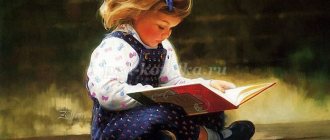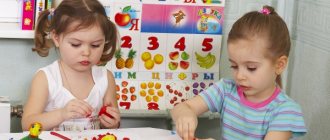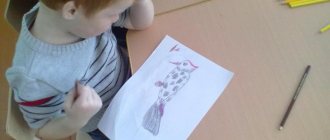Khokhloma: painting, pictures and patterns
There are several types of ornament:
Herbal painting is an ancient type of painting. It is painted with small strokes, curls, spikelets and berries on a silver background.
Reminiscent of Russian grasses - meadow, marsh sedge, white grass.
This pattern can be scattered throughout the product of plates, cutting boards, boxes, or collected in bouquets or bushes. Moreover, from scattered blades of grass, artists create various combinations of pictures - the motif of a rooster, a firebird sitting on a tree, pecking berries, as well as fish.
Painting “like a leaf” or “like a berry” - in addition to grass, it includes oval petals painted with brush strokes and larger strokes.
The base consists of pointed or rounded leaves of three or five, and groups of berries near the stem.
Depending on the size of the product, elements of branches, rowan, grapes, currants, gooseberries, strawberries, chamomile flowers, tulips and bells may be included.
Painting to resemble “gingerbread” or “saffron milk cap” - this ornament is usually used inside a dish or bowl. Geometric shapes fit into a rhombus or square. With grass bushes in the corners, and in the middle - a large “saffron milk cap” in a circle - the sun. Gingerbread is also called “braid”, since braids of herbs and motifs seem to grow out of it. At first, these painting elements seem simple and primitive. But if you look closely, you can see that the sun is moving, and along with it all the leaves and blades of grass are captured in a whirl.
“Kudrina” - stylized golden images of curly curls forming leaves, flowers, berries and fruits. This is a type of painting where the main thing is a contour line, a golden spot and light, thin strokes in drawing small details.
“Background” - the artist draws a stem with flowers and leaves, stylized images of cockerels and fish. The background is then filled in with paint, usually black. On top of the black background, strokes of paint are made - blades of grass, bunches of wild apples and small flowers are stuck on.
Painting under “Gingerbread” Khokhloma under the background Painting “Kudrina”
Khokhloma. Khokhloma painting for children.
Khokhloma is an ancient Russian folk craft, born in the 17th century in the Nizhny Novgorod region. An old legend tells: once upon a time there lived a man in the Nizhny Novgorod forests, on the banks of a quiet river. We don’t know who he is or where he came from. The man carved wooden cups and spoons and painted them so that they seemed to be made of pure gold. The king found out about this and became angry: “Why don’t I have such a master in my palace?! Give it to me! Immediately!" He tapped his staff, stamped his foot, and sent soldiers to take the craftsman to the palace. The soldiers set off to carry out the royal order, but no matter how much they searched, they could not find the master’s miracle. He went to God knows where, but first he taught local peasants how to make gold utensils. In every hut cups and spoons sparkled with gold.
The village of Khokhloma, Koverninsky district, Nizhny Novgorod region, is considered the birthplace of Khokhloma.
Products for Khokhloma painting, most often dishes and furniture, are made of wood. But before painting on them, the surface is coated with a primer and shiny oil using a special technology. Then this shiny surface is tinned - aluminum powder is rubbed into it with a soft cloth, from which it becomes silvery and very smooth, and after varnishing - golden. The dishes are painted “Khokhloma” with oil paints. Traditional elements of Khokhloma are red juicy rowan and strawberries, flowers and branches. Birds, fish and animals are also often found.
Red, black, gold and green are the colors of Khokhloma. To liven up the pattern, a little white is allowed.
Painting can be “top” - a design is applied to a silver blank in red and black; and “under the background” - first the outline of the ornament is outlined, and then the background is filled with black paint, while the pattern itself is not painted, but remains silver. When varnished, the silver coating will turn golden and look as if it was made of gold. 
Let's practice horse Khokhloma painting? To do this, you need to print a sheet with the pattern or utensils you like. And there - pick up a brush and paints and go!
Grass is a pattern of large and small blades of grass. Pattern elements: sedges, blades of grass, droplets, tendrils, curls and bushes.
Herbal ornament.
Leaf pattern - stems and leaves.
The berry pattern includes the following ornaments: lingonberry, gooseberry, currant, strawberry, rowan, raspberry.
The “gingerbread” ornament is usually painted inside a cup or dish; it is a geometric figure (square or rhombus) decorated with grass, berries, and flowers.
In painting “under the background” the element “curl” is more often used. Curl painting is a rich, lush pattern with round, intricate curls reminiscent of curls. It is not the patterns themselves that are drawn, but the dark background. And the resulting pattern is supplemented with small colored elements (postscripts). This process is much more labor-intensive than horse painting.
Painted items are coated with a special varnish 4-5 times (with intermediate drying after each layer) and finally hardened for 3-4 hours in an oven at a temperature of +150 +160 °C until a golden-colored oil-varnish film is formed. This is how the famous “golden Khokhloma” is obtained.
Basic colors of Khokhloma painting
It is executed in three colors - red cinnabar, gold and black soot. On the background, green, orange, blue, yellow, cyan are used for drawing. Each tone carries its own meaning. Black means the depth of the universe, eternal darkness, infinity. Red – beauty (the maiden is red, Red Square), health, strength, prosperity. Gold is a characteristic sign of fertility, wealth and prosperity. These fiery combinations do not irritate the eyes and bring beauty, peace and relaxation.
Horse painting
This art of painting involves applying black and red primary colors to a silver or golden yellow background of the piece.
What makes Khokhloma different from other types is its unusual drawing technique, which involves not only the artist’s fingers, but the whole hand.
The master creates long strokes and plastic strokes of the ribbon ornament in one continuous movement.
On surfaces in the form of a sphere - a sugar bowl or a candy bowl, a barrel cylinder, a samovar or a teapot. The riding style is characterized by “grass painting or grass”, “berry or leaf” and “gingerbread” ornaments.
Khokhloma on the background
Background writing differs in that the artist uses a thin brush to apply the outline of the future drawing. The master holds the brush with the phalanges of the finger almost vertically to the surface of the object. Lightly touching, slightly rotates towards you. Then the background is painted over with red or black. And the motifs themselves are drawn on top of the background. Gold only appears in the silhouettes of flowers, birds and horses, and in the bends of blades of grass. This is a very labor-intensive process, such products are expensive, they are usually made to order. A type of “background” pattern is “Kudrina”. Golden curls of curls look very impressive against a black or red background of tableware, tea pairs, vases and panels.







